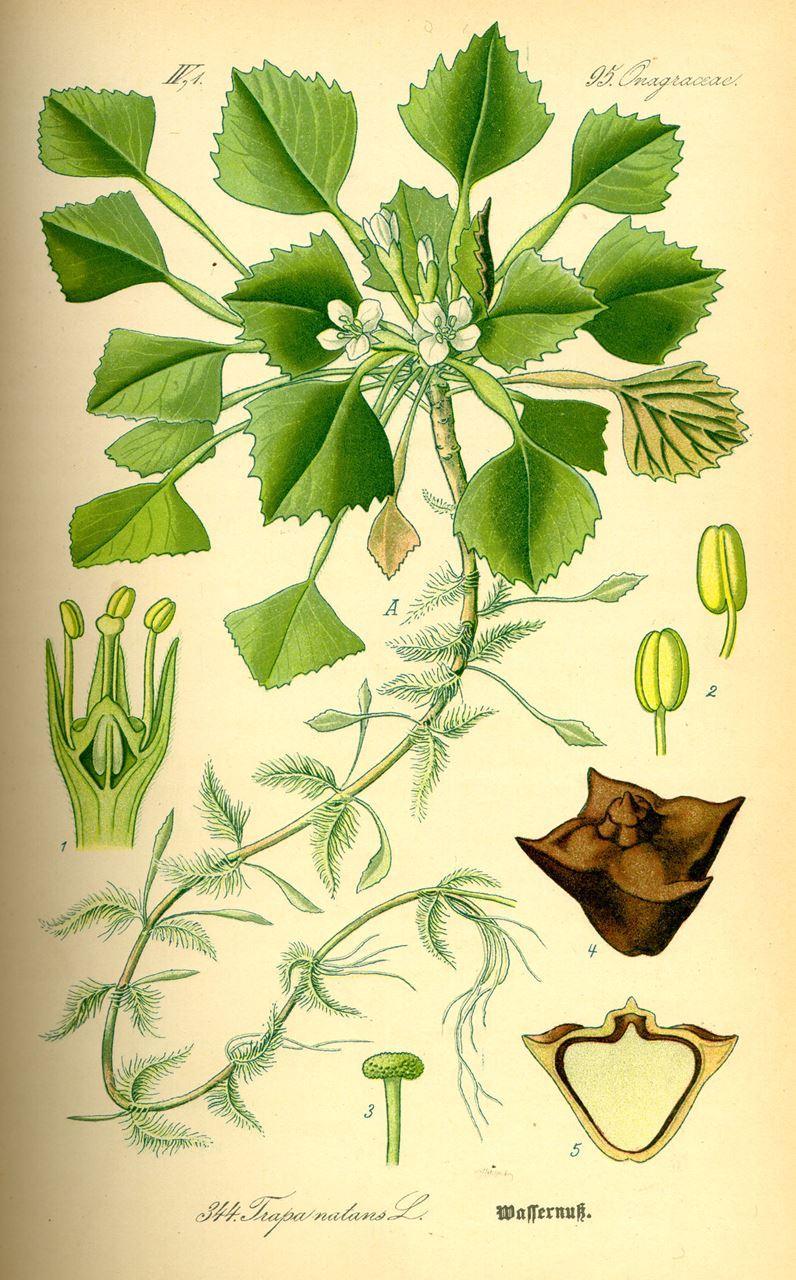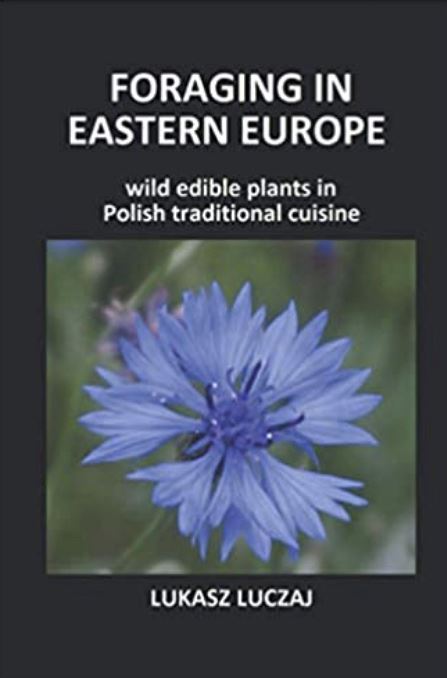Łukasz Łuczaj shares a Polish perspective on water caltrop (Trapa natans) , an edible aquatic plant.

Water Caltrop Trapa natans L. Folk names: orzech wodny, kotwiczka, żydowskie orzechy
An annual water plant. Very rare in its wild state, it can be found only in the south, mainly in the valleys of the Wisła, San and Odra. It occurs mainly in oxbow lakes. In spring the nuts germinate and shoots rise from the bottom of the water body to the surface. In June the water chestnut creates floating leaves, and in the summer small, white flowers. The prickly nuts left over may be collected at the end of August and in September. Then the whole plant dies. Its range in the last few centuries has shrunk dramatically, partly due to climate changes, partly due to the regulation of rivers, the destruction of old rivers and the introduction of plant-eating fish (e.g. grass carp Ctenopharyngodon idella) (Piórecki 2008).
Water caltrops were formerly collected for food in a few places in Poland. In Siołkowice in the Opole province, nuts were still collected in the twentieth century. They were blanched before use, which made it easier to open the nut (Szromba-Rysowa 1966). Kolberg mentions the eating of water caltrops in the Chełm area in the nineteenth century (Kolberg 1890b). The fruits of the water caltrop were mainly eaten by children, also in Pysznica near Nisko (Podkarpacie) and the Kozienice area (PEA2). In the Sandomierz area Jews ate the nuts, buying them from peasants, hence they were called ‘Jewish nuts’ (Hryniewiecki 1952).
In the Lubomirski Ordinance in Charzewice (in the former Sandomierz Forest), still in the nineteenth century serfs paid rent by collecting water caltrop fruits (Gaj-Piotrowski 1975). In the mid-twentieth century in Zbydniów near Rozwadów (south-east Poland) rye bread was made with the addition of flour made of water caltrop. The seeds were ground in mills (Piórecki 2008). In the same area boiled nuts were sold during village fairs, packed in paper bags. So writes Piórecki (2008):
It was necessary for highly valued elegance amongst young men, for them, before giving girls nuts to taste, to cut the woody covering of the nut with a sharp pocket knife and put it straight in the mouth of the chosen girl. This was done through cutting it down the whole height of the lower arm of the nut, i.e. from the neck to the base. After cutting, or more precisely, through pressing, like a tick, the upper arm of the nut in his fingers, then the seed of the nut was thrown as if from a catapult straight into the mouth. Already peeled nut seeds 'like toffees from the fair' were sold at a higher price.
Fresh fruits – the easiest to peel – were collected from the end of July to mid-September, and in the spring the fruits were eaten after wintering in a cool pantry i.e. in water in natural containers or special winter storage places. The fruits were used after half an hour's boiling in salted water (Piórecki 2008).
A significant interest in the consumption of the nut was shown by people of Jewish descent. Jewish buyers before 1939 paid 1 złoty 80 grosz for 25 kg of peeled fruits of water caultrop. In this period a day's work for one worker harvesting crops on the farm was worth 80 grosz. Two strong men in one day, in good weather conditions, could collect from 150-200 kg of fruits from the oxbow lakes in Zbydniów or in Chwałowice (Piórecki 2008).
Find out more about foraging plants that grow in Eastern Europe Łukasz's book 'Foraging in Eastern Europe' Plants cross borders and many of the species he writes about grown in wider areas, for example water caltrop is found across Eurasia and has also been introduced to the USA where in some areas its rapid growth covering lake surfaces is considered problematic. For example here is a species profile of water caltrop in the Great Lakes region.
